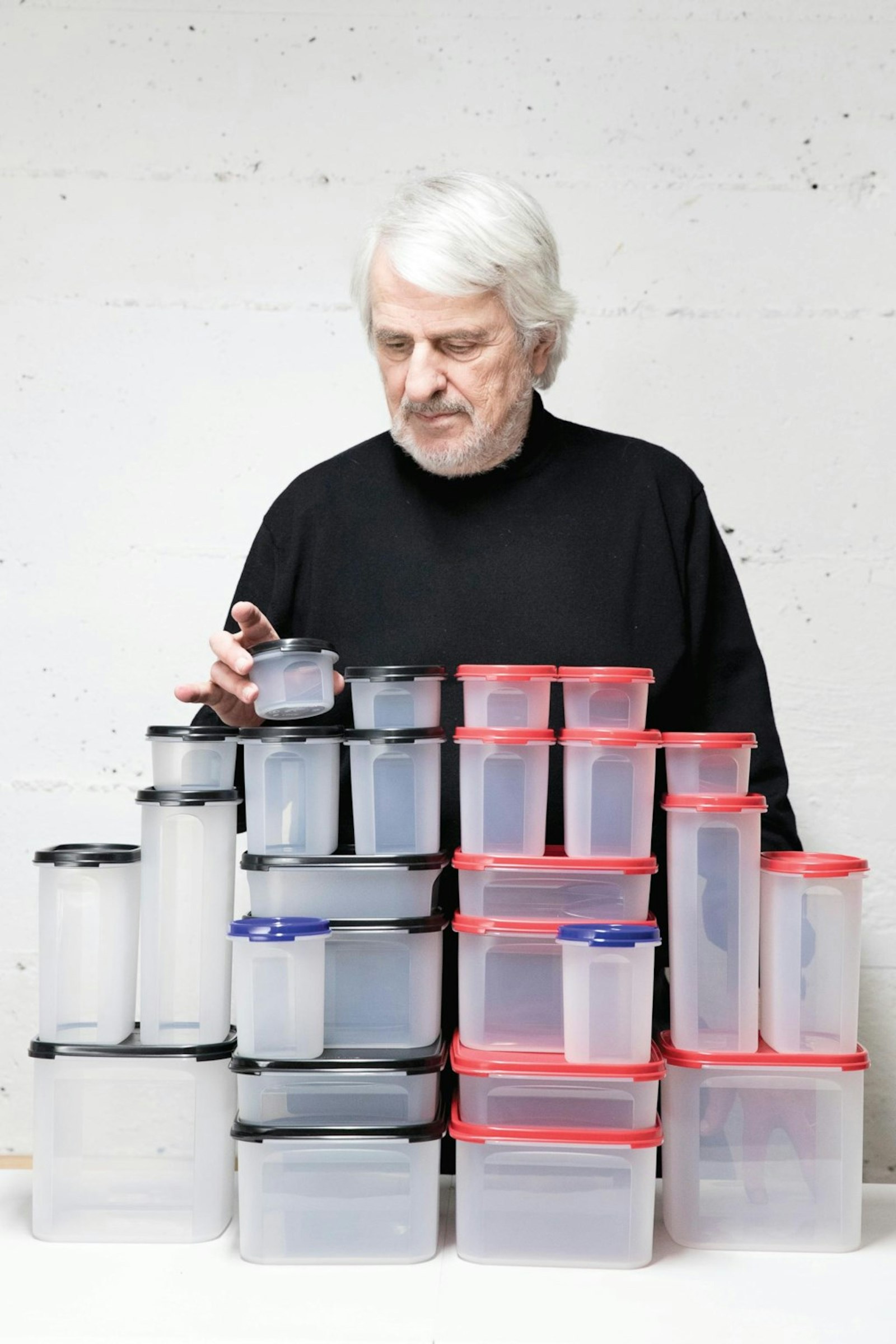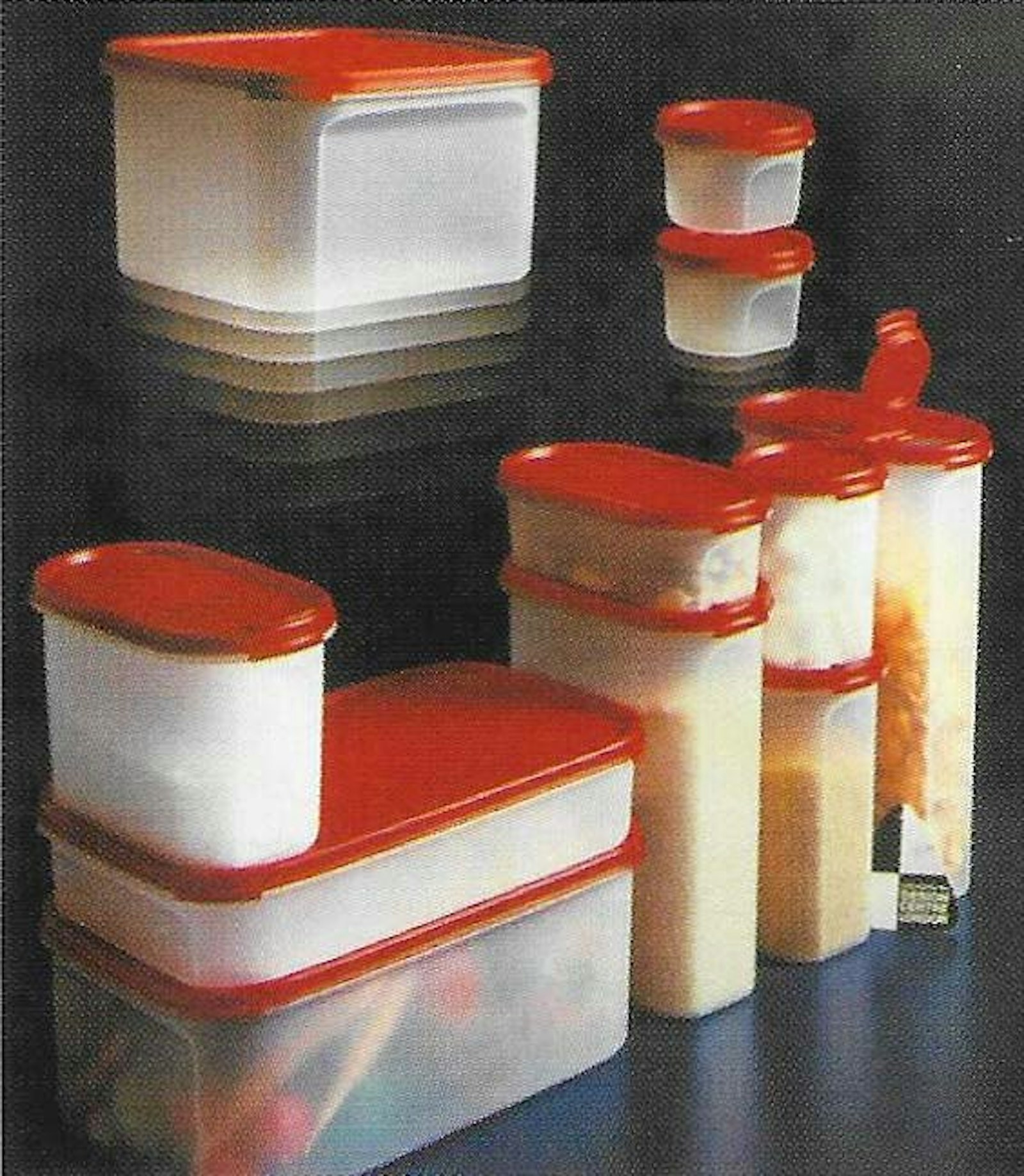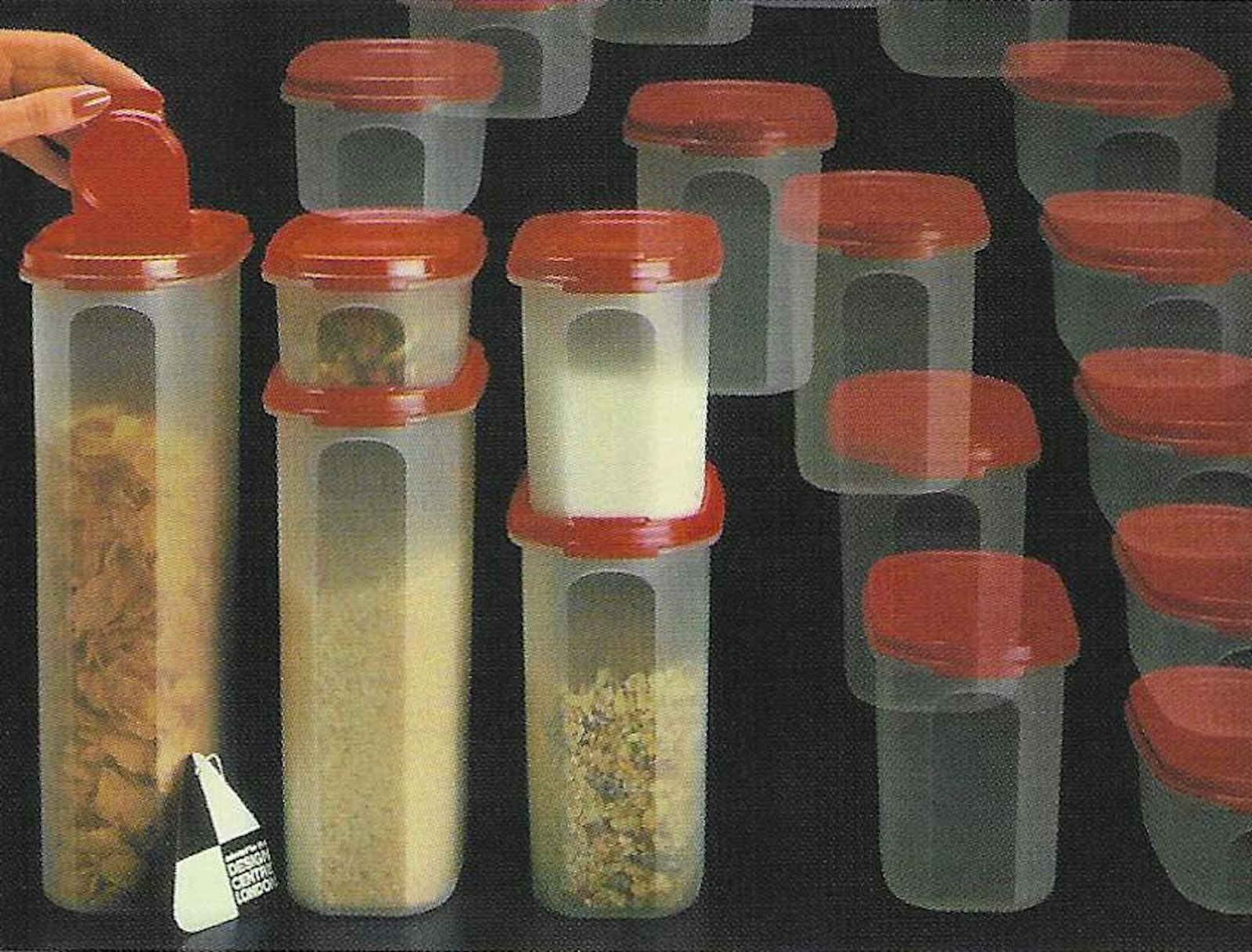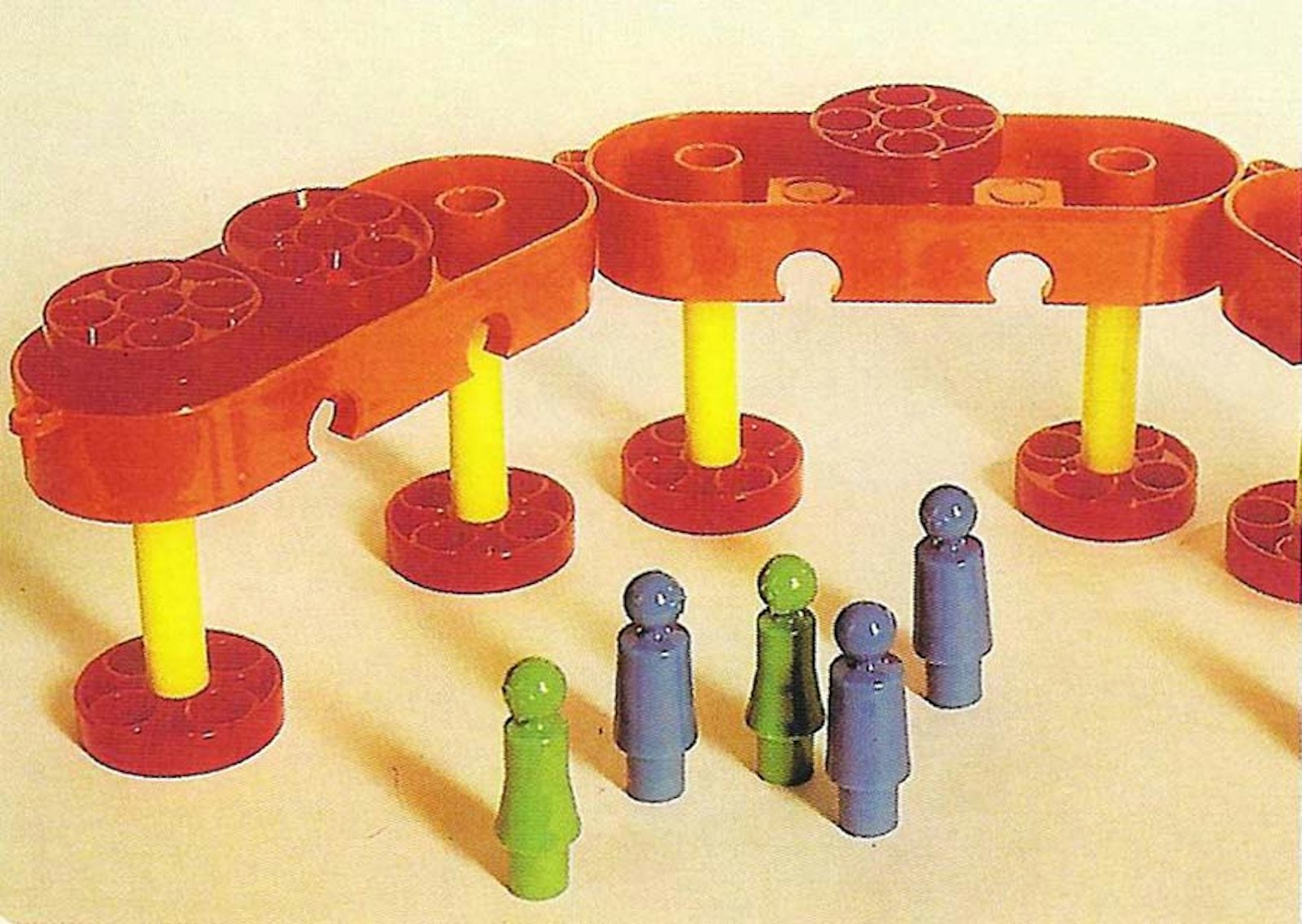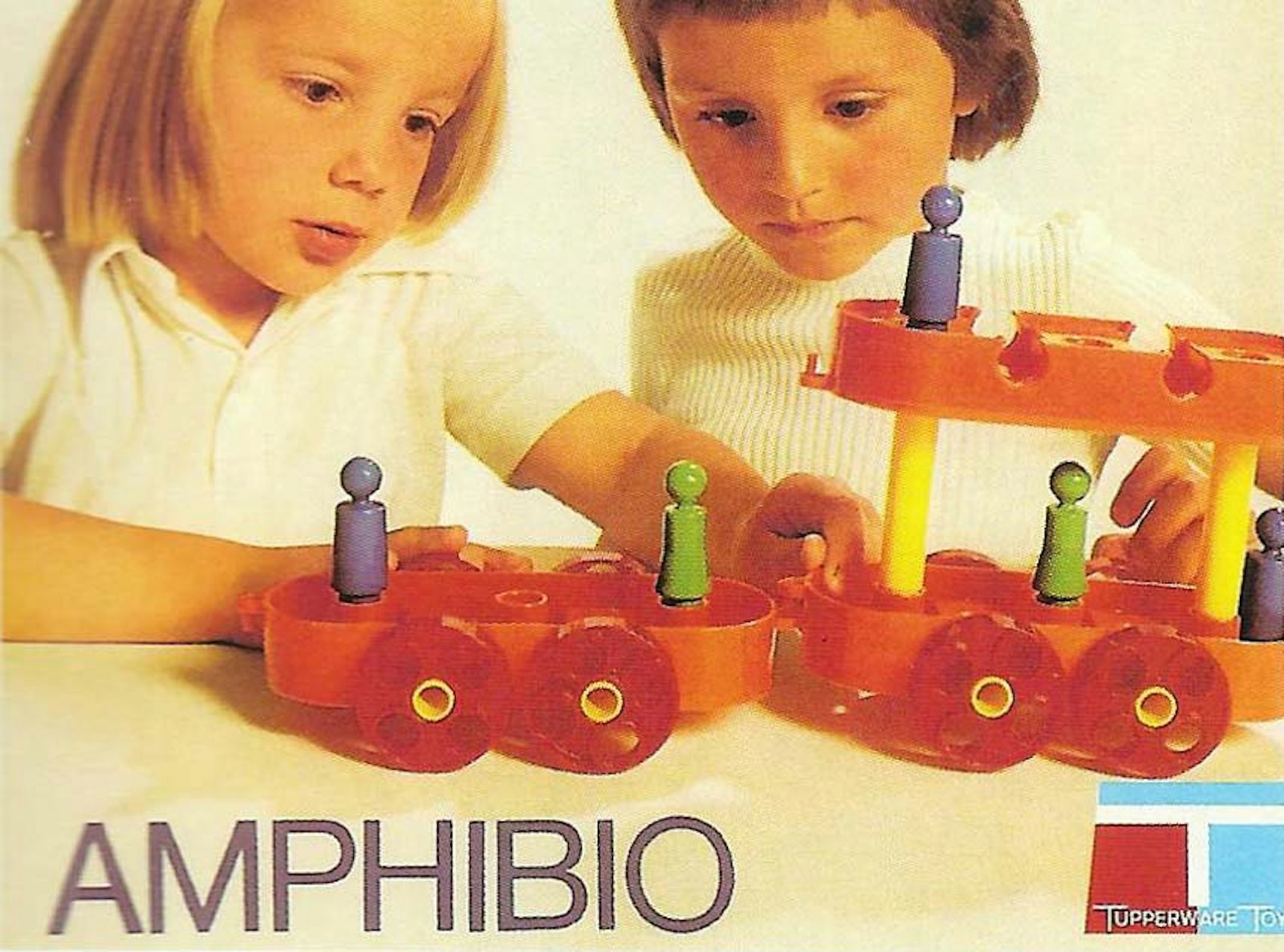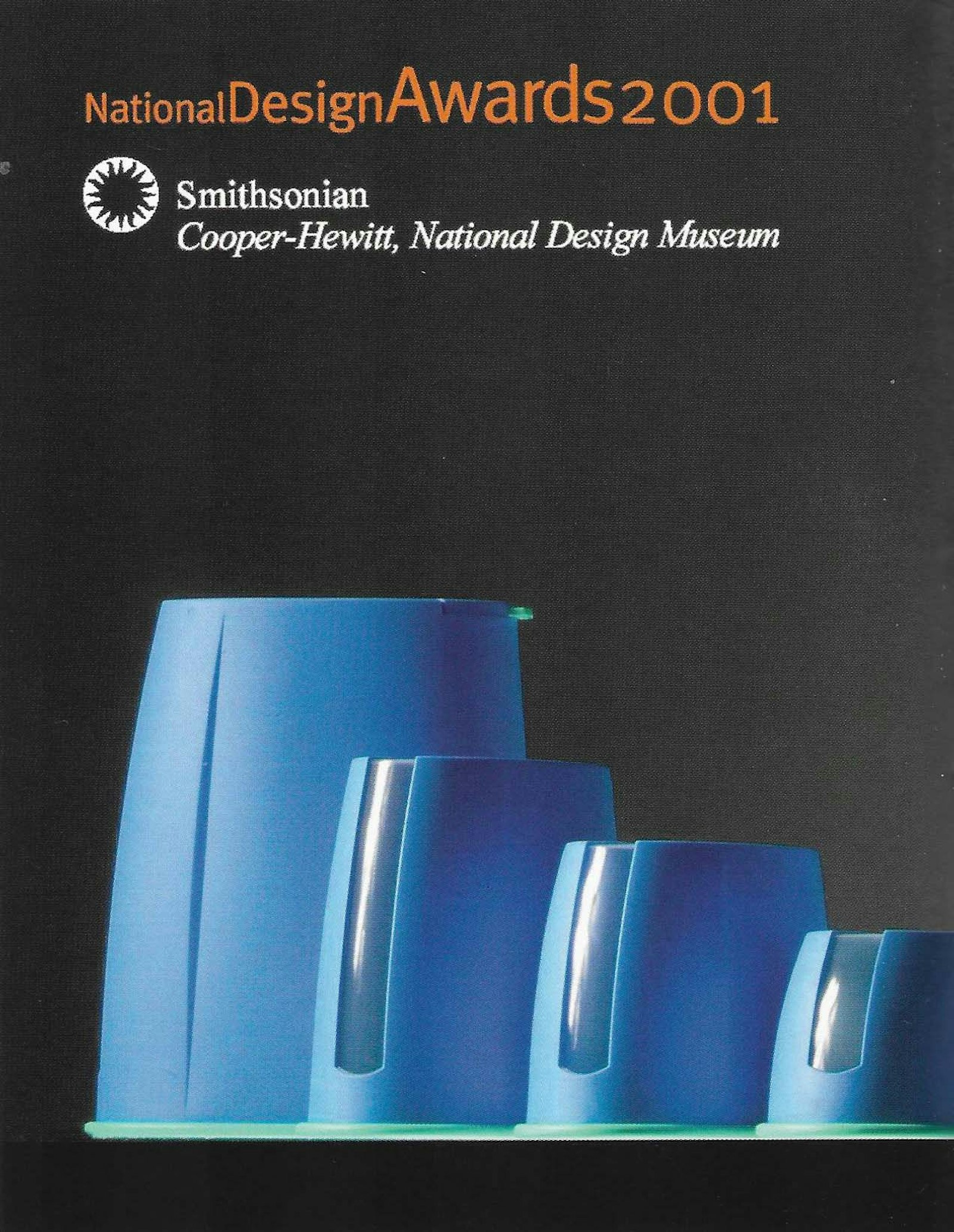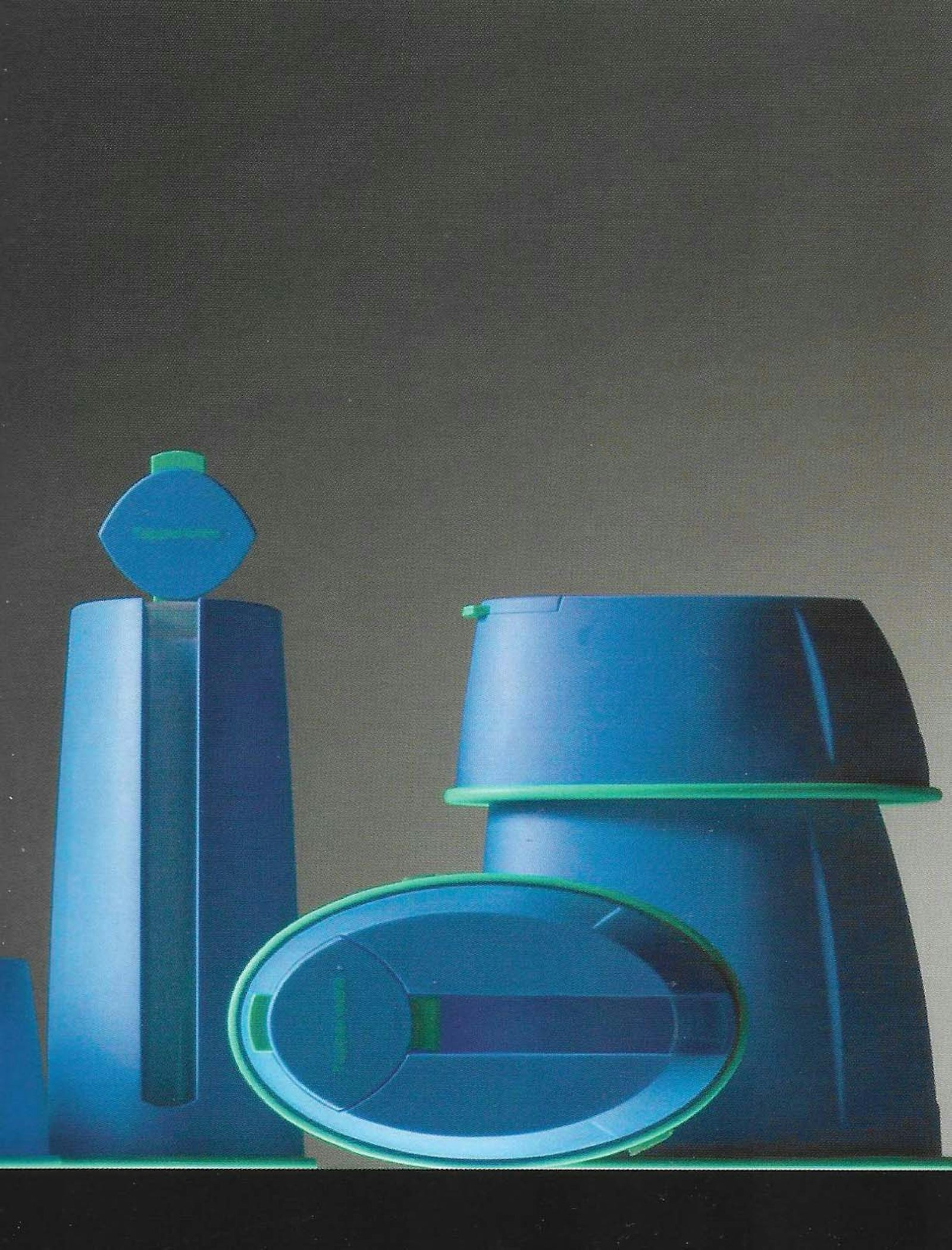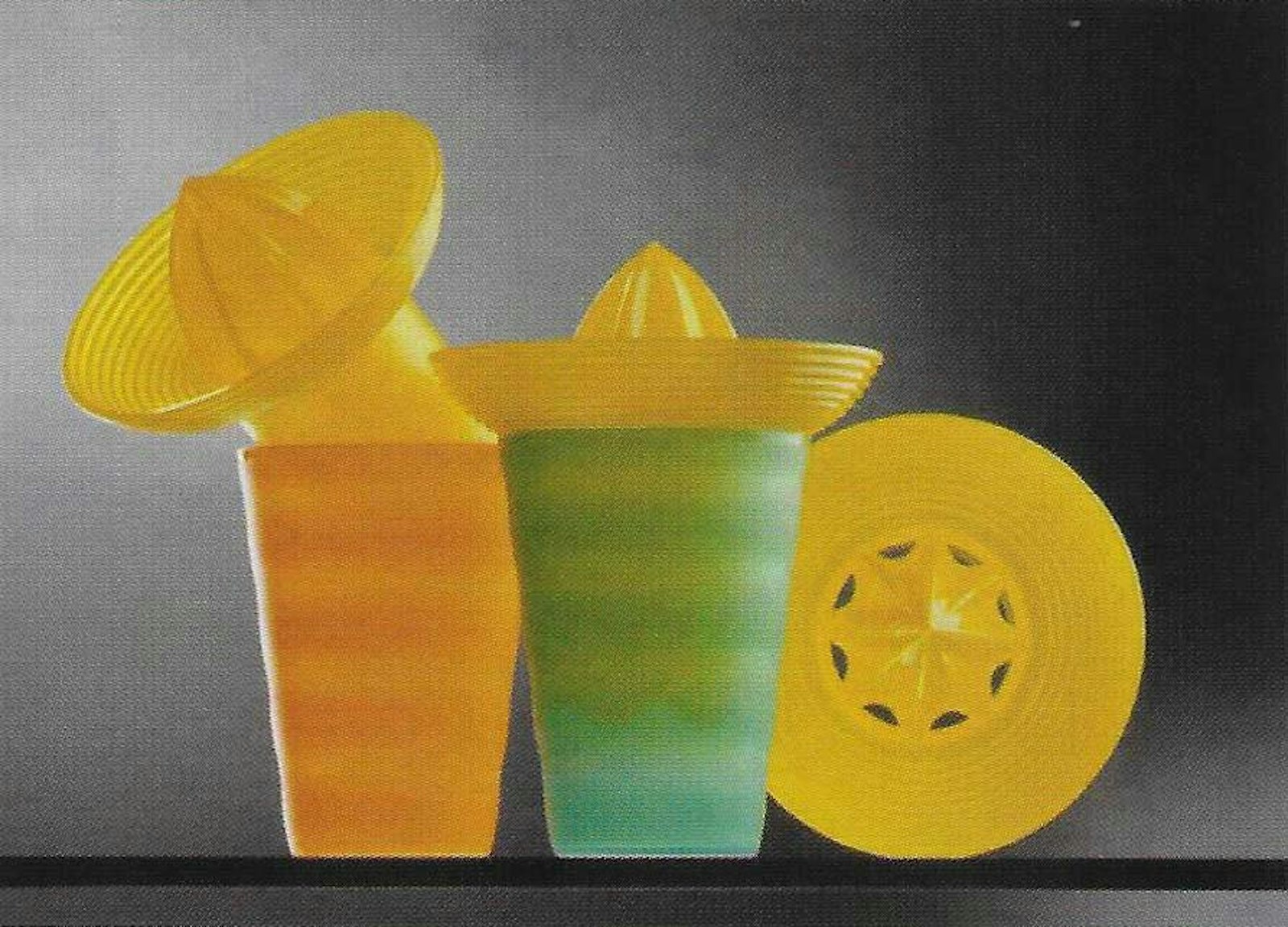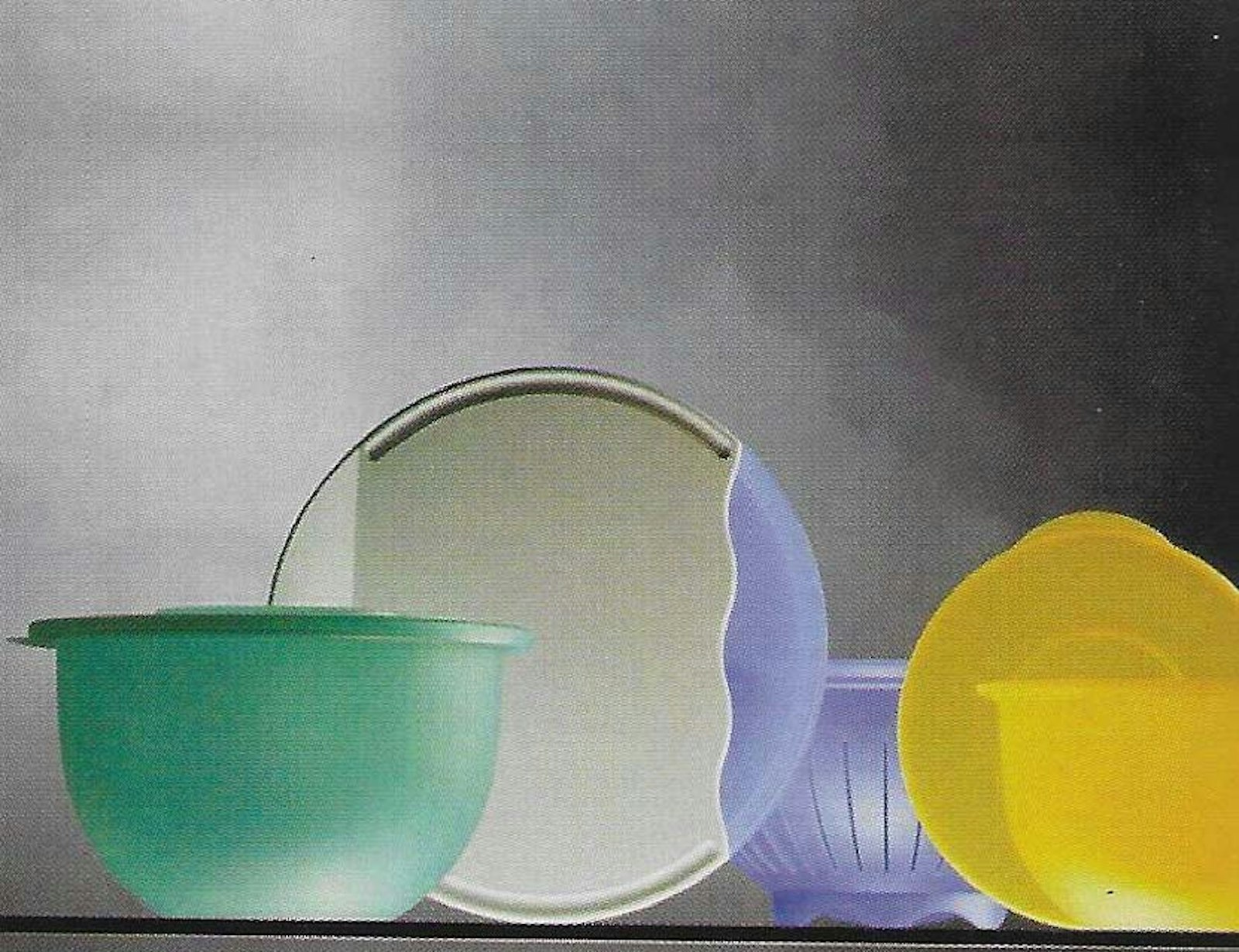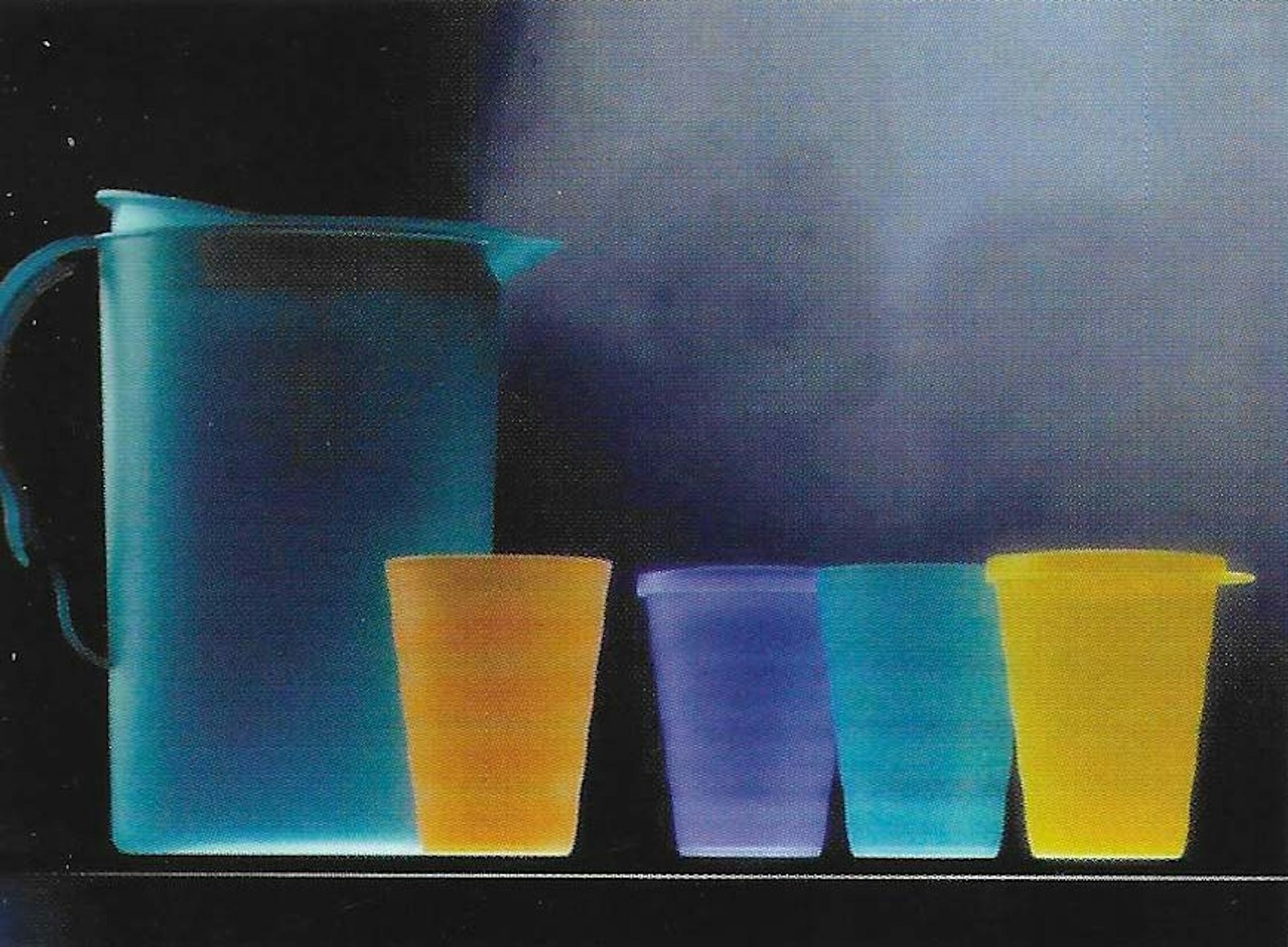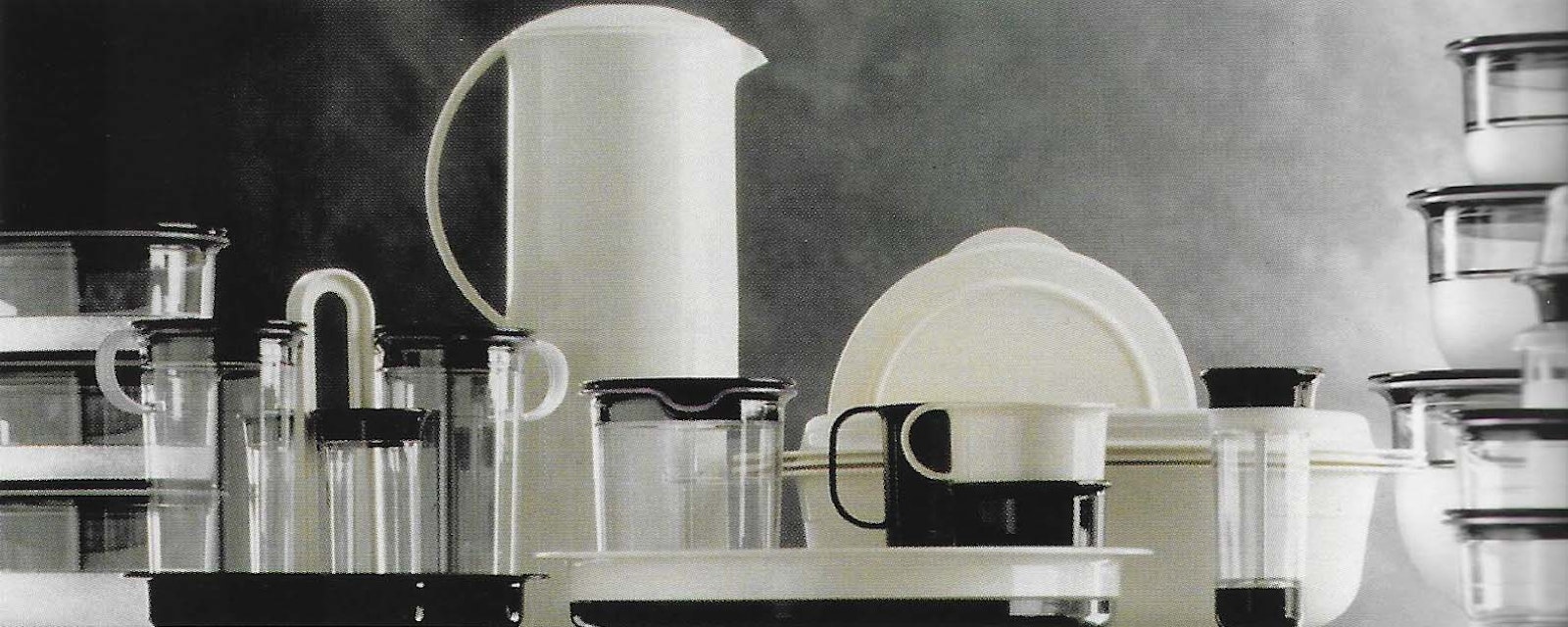de Velde
Bob Daenen
Bob Daenen's (°1942) brief biography can be read like the one of an artist. His "realisations" as a designer are mentioned, but do not step in the limelight.
Beyond banality
lts shows his aim not to concentrate on his job only, but to develop a wide interest, a braad vision. He strives for a total experience, to stay creative without "being lived". Bob nevertheless has an enormous merit as a product developer. Since he has started to work as a designer for Tupperware in 1966, the company developed a very strong, worldwide design image.
His main task was to set up a European centre for product development in Aalst. The purpose was to enhance the American image Tupperware's new products had and to expand on the European market. He succeeded in doing this, that's why he became, after a number of promotions, Vice President Innovation of Tupperware and the former design centre of Tupperware in Orlando [USA] now officially calls the "Bob Daenen design centre". In earlier times he was a pioneer of product development in postwar Europe and Belgium and in the context of a multinational. Nowadays he inspires and stimulates innovation in the entire company and receives the Henry van de Velde Award for Career 2003.
Earl Tupper, founder of the company, had an incredible view on the potential of plastics and developed a pure type of polyethylene. This resulted in the famous lid that sealed a bowl hermetically, on which Tupperware is based. Unfortunately, his invention came too early for the business. People didn't understand the product, with a lot of limiting consequences for sales. In order to solve this problem, Tupper developed a strategy in which explanation and sale complemented each other perfectly. The famous Tupperware Parties were born. The success story could start.
Bob has known the founder Earl Tupper. He had two meetings with the man, at the time Tupper wanted to come back in the company after he had sold it in the middle of the fifties. Those meetings constituted a real relief. This brilliant, visionary and enthusiastic person, who wanted to handle everything and to create constantly, impressed Bob. Tupper always had a sheet of paper in his left pocket, on which he sketched and wrote ideas. Then he put the piece of paper in his right pocket to work it out in the evening.
Creativity with content, if another creativity exists, is the base of the whole story. Content, vision and depth are the basic ingredients because when a designer doesn't have these, he won't be able to rely on the most important base for creativity and innovation. Also in his management that was heavily focused on the recruitment and coaching of his personnel. When he wanted to recruit designers for his design department, he assessed the content and possibilities of the applicants. It is very important to find the right talent at the right moment, how to recruit and how to keep this talent vivid. The continuous boost of the design department and the way to keep it strong is of crucial importance for design management.
Bob Daenen has put design equal to creativity, spirituality and savoir-vivre during his career of almost forty years [37 years].
"We see too many soaps on TV, empty and banal, too many magazines, glossy but commonplace. We hear too many conversations, talks, music without content or beauty.
We see too many products without message nor identity. We experience too much banality, commercialisation of the emptiness, the cliché. But nothing should be banal, every word, idea, each contact, flower or product should have a meaning, depth and value, or can be unique. Banality is a (non)state of mind: is unconsciousness.
In nature nothing is banal; every flower is a wonder, every leaf an engineering-masterpiece, each tree is a great sculpture, every solution an ingenious design, and we are part of nature. So we have to perforate, look through the banality-facade to detect the essence, the real "reality''. So designing a (simple), living a (simple) event means product means refusing the banal, searching for the redefinition of values, the re-invention of the meaningful, the mastering of the great totality."
This text is so typical for him, with respect lor the Bauhaus philosophy. Gropius and his group went through facades, through the essence and remade the shape, based on reflections about the inner powers (values) and structures of an idea. lt became and still is the basic philosophy of Tupperware.
Bob's admiration goes out to a Leonardo Da Vinci and a Henry van de Velde, who were both a sort of Homini Universalis. They painted, drew, designed and wrote. A little bit like Bob although he doesn't put himself on their level. There area lot of questions on humankind and human being to be asked. Nowadays Bob takes time to ask himself these universal questions like about death and the mourning process.
He graduated at the "Academie voor Industriële Vormgeving" (now the Design Academy) in Eindhoven in 1965 and worked as an independent graphic designer during one year. In 1966 he applied for a job at Tupperware which was established a few years before (1961) in Belgium and moved to Aalst. According to the announcement in De Standaard (Flemish newspaper), the company was in search of an "Aggressive Young Designer". A quite strong way of putting it, Bob thought. Bob asked information and in tact they wanted a dynamic young designer.
There were almost no possibilities to get a job as a product developer at that time. There was De Coene (see Philip Neerman, 1930), Meurop, Philips and that's it.
Nevertheless a number of contemporaries also found their way in design and are still active in this field nowadays. You have Rob Buytaert (°1936) who is a little bit older than Bob. Koen De Winter (°1943) in Canada and Paul Verhaert (°1945) are younger, but Bob still thinks they are brilliant people. Rudi Verelst, also in Canada and Axel Enthoven (°1947) are contemporaries of Bob Daenen. They have all become successful designers who can look back on a nice and busy career and are still working for it (in most cases).
He initially wanted to become an architect, but after reading articles of Karel Elno (°1920 - +1993), he felt attracted to industrialdesign. In all his writings, Elno emphasised the social and cultural dimension in design. Furthermore he was an art critic and in the meantime an amazing person with a huge charisma. At a certain moment, Bob could convince his father to accompany him for a discussion with Elno. The matter was settled, he got the permission to study industrial design. With the consequence everybody knows.
Nowadays, Bob Daenen has about 260 patents which have been transferred to Tupperware. His most successful product is the "Space Savers". Twenty years after it has been put on the market, it is still in production. The need for it is huge, the commercial success is enormous, just like the social recognition.
The "Space Savers" received an Award "fora product that survives the test of time" in Japan. For him, it was an inconceivable distinction for he had made an almost timeless product. Tupperware, Bob and his collaborators, received more than forty prizes all over the world for all kinds of products, from 'the Expression Range (lmpressions in certain countries) to the Window Canisters, which bring soft and hard material - moulded at once - structurally and decoratively together. He dedicated this success to the unlimited freedom he got in the company, which meant a really large creativity and dynamism for him. In the beginning of his career, he nevertheless felt like the one-eyed man in the country of the blind. At that time, nobody knew what product development was.
Throughout the years, Bob regularly cooperated with other designers such as Morison Cousins and Stig Lillehund, his best friends and colleagues. Unfortunately, both have died and he wrote collections of poems for them. Morison Cousins was responsible for the design department in the USA and Stig Lillehund was a Danish designer, a consultant from outside the company, with his own design agency in Copenhagen.
According to Bob, always working with internal designers is not so good. You either become sometimes too specialized or too limited. A good mix of external and internal talent leads to better results, is refreshing and inspiring.
lt was a pleasure to design with Stig Lillelund. He shared Tupperware's view and culture. Furthermore he didn't impose his opinion. Tupperware also worked with another agency called "FM" [Fether-Miles) from England. This was a good office, they also worked for Samsonite and knew a lot about the plastic technology. Furthermore they had the right mentality and fitted into Bob's long-term vision and design strategy.
Concerning his paintings, I will be brief as I did not see much of it. He has nevertheless exhibited several times in Belgium and other countries. He even received the Delaunois Prize for Painting. Main feature of his work is the strong geometry, in two or three dimensions. The illustrations in his poem collection "A dozen words" (see below) prove this.
I have read his books and poems, but also in this matter, I want to withhold from an interpretation, although I saw that, where he as a designer tries to turn dreams into reality, he works just the opposite way in his poetry. His poems are "worlds" where reality becomes a dream. There is a collection called "Signs without language" ("Tekens zonder taal"), the already mentioned "A dozen words", which is a collection of all his poetry, with illustrations of plastic works since 1984. "Meditation for Morison" and finally "Letters to my friend" are dedicated to Morison and Stig, his friends-colleagues who passed away. Particularly in his last book, he deals with questions about the mourning process, life, death and spirituality. Besides a strong evidence of friendship, ifs a search for the whole, the coherence of the human being, a strive that determines his whole life and oeuvre .
